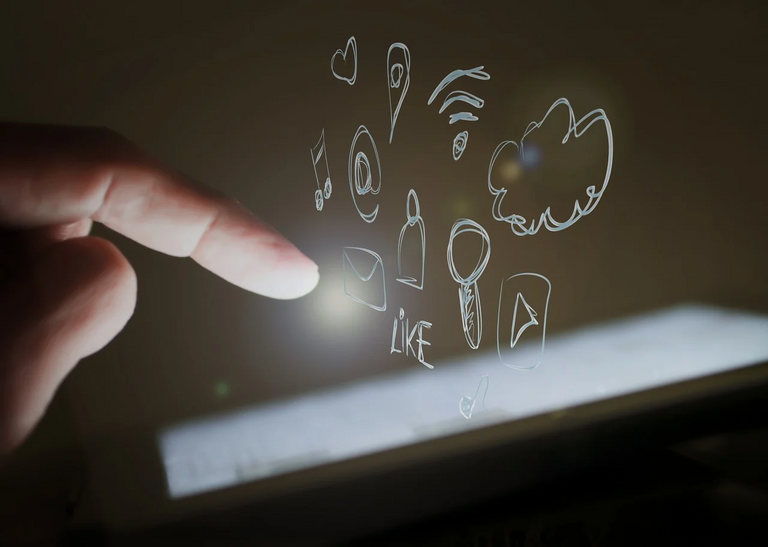How technology changed education?

An online class in Zoom. pixabay
Education is now a prerequisite that can be received not only from educational institutions such as schools, private institutions, or similar institutions, but also from any initiative, power, security, and assistance given to children for their maturation, or for assisting children in carrying out their own life tasks. The effect may come from older partners or from anything generated by adults, such as schools, books, everyday life events, and a number of other items targeted at children. As a result, education is not only received from adults such as teachers, but it is also created by adults through books and other materials that can help children grow. Education is a method of influencing children so that they can best adapt to their surroundings, causing changes in them, and assisting them in playing an important role in society. This ensures that schooling encourages children to take responsibility for themselves and for their surroundings.
Education today develops in lockstep with scientific progress and is inextricably linked to technological and communication advancements. Educators can use a variety of technology and communication devices to aid them in their instruction, either as a teaching aid or as a medium for learning. The OHP is a current teaching aid that is frequently used (Over Head Projector). When considering the advancement of technology, education can be developed in a variety of ways, including through the use of electronic media such as television and the internet, as well as through the use of cellphones (smartphones). Electronic gadgets emerge as times and technology advance, such as mobile phones or handphones that serve as both a text message sender and a long-distance communication device. Mobile phones now have a wide range of functions, ranging from music player applications to camera applications to applications that make it simple to surf the cyberspace or internet. Smartphone (derived from "smart phone") refers to a cellphone with all functions. Because it has the functions of a computer in a smaller form and is portable, the Smartphone or smart gadget can be referred to as a mini computer. Cellphones were designed primarily for adults who wanted to make their jobs easier. They do, however, begin to spread among teenagers over time. Although the smartphone has many functions, it is primarily used by teenagers for chatting with friends, finding new friends through social media, and exchanging images or photographs, none of which are related to a teenager's responsibility to learn.
The mobile device has a wide-ranging and comprehensive impact on learning. To begin with, it is the integration of advanced technology into the classroom environment for students. This means that students who are already comfortable with technology will begin to see it as a tool for learning and development rather than just for entertainment. The impact of the mobile device in the classroom allows for enhanced learning materials such as the use of dynamic visual mediums like pictures, videos, and gifs. The impact of using a mobile device in student learning extends beyond the classroom – students are using tools that they will use in their future jobs, preparing them for the future while still in school. But what does it mean to learn on a mobile device? It is considered learning on a mobile device when a tablet, mobile or cellular phone, laptop, or Chromebook is used to aid in the teaching or learning of the classroom curriculum. This could include reading course materials on a mobile device, playing educational games on a mobile device, and even taking exams on a mobile device.

Social Media. pixabay
The mobile device has a wide range of effects on students and their learning. The effect of the mobile device on student learning is important, given the growth of education technology and its pervasiveness within the educational ecosystem. As a result, extensive research on the effect of mobile devices on student learning has been performed. Another effect of the mobile device on student learning, according to recent studies, is a better understanding of materials. One of the main challenges that teachers face is that different students learn at different rates, and it can be difficult to assess this for each student individually. The importance of the mobile device cannot be overstated: since the effect of mobile device use is restricted to the use of individual devices by each student, learning can take place at a student's own speed. In the classroom and in educational institutions, the mobile device has a major effect on student comprehension. It satisfies a vital need for teachers in the educational ecosystem. The use of technology to level the playing field for students is one of the main aspects that educational experts and advocates campaign for.
The use of a mobile device in the classroom is no different. Students who use mobile devices such as laptops, tablets, Chromebooks, and other similar devices have a significant effect on their learning across the board. This means that more equal access to learning is being created, which means that every student has the same access to the same materials as their peers. In today's world, the importance of educational equity cannot be overstated. It is one of the most important measures of social mobility, and if the effect of mobile devices on student learning is access to more learning and therefore more resources later in life, the impact of mobile devices on creating a better world cannot be overlooked. As a result, stakeholders in the educational environment must collaborate to ensure that the effect of mobile devices on student learning is felt by students all over the world. According to a recent study conducted on students using mobile devices in the classroom, another effect mobile devices have on students is a more attentive approach to learning. The study found that having a mobile device in the classroom for the purpose of the student had a positive effect on how involved students were in their studies. Students are more interested in studying the content in their classes.

A typical student desk. pixabay[
Proactive learning is important for students to cultivate an interest in learning and education, and it is a mobile device impact that most educational institutions can easily achieve. All they have to do is invest in the initial costs of purchasing a mobile device – everything from tablets to laptops will suffice – as well as some initial time investment in teaching students to use them efficiently so that they can completely profit from the mobile device's positive impact on their learning. Another impact of the mobile device in student learning is the development of their intra-classroom conversational skills, according to another academic research report. In this study, a group of students was given a mobile device to see if it affected their progress in English conversational skills. With conventional face-to-face teaching methods, another community was simply used as a control. When both groups of students were tested on their conversational skills after a period of time, it was discovered that the influence of the mobile device on English language conversational skills was beneficial to the students, much more so than the control group. This demonstrates that the impact of the mobile device on student learning is positive as far as improving speaking and communication skills in English goes. The same academic research study that demonstrated the above effect of the mobile device on student learning also demonstrated another effect of the mobile device on student learning. In this analysis, researchers discovered that students who used a mobile device to learn had higher academic achievements than students who studied in a classroom. This indicates that students who used a mobile device had higher grades and academic achievements.
The availability of technological gadgets to all age groups and the masses who previously could not afford them is one of the characteristics of a technologically developing world. The widespread availability of technological devices is attributed to the roles they play in our daily lives. These roles can be both positive and negative at times. We will look at the positive and negative effects of mobile phones on students in this article. Smart phones were not as common decades ago as they are now, so students relied on desktop computers in the library to get things done. This slowed the pace of important classroom research. Mobile phones today are easy to use and incorporate a wide range of modern technology. Learning does not stop when you leave the classroom. Students can use these phones to get real-time information and updates as they go about their academic lives. When technology-driven tools are used to aid learning rather than traditional methods, student engagement improves. Students no longer have to wait until the computer class time so that they can check things out.
With mobile internet-enabled devices, they can check up stuff from anywhere. This means that learning goes on all the time, in and out of the school setting. Students no longer have to wait to access the school or community library because with a smartphone, the world’s biggest library- the internet is at their disposal. When the teacher encourages students to use technology to advance their studies, they will happily do so because they love technology. During teenage, students tend to be stressed up by many things. Thankfully, their mobile phones pack a lot of entertainment in the form of games, cartoons, and many more entertaining things. No matter the age of the student, there is always something entertaining on their mobile phone. For a parent, knowing that your elementary school student is watching cartoons on mobile gives you peace of mind, as you will know they are up to no mischief. To keep up with the current technological era, most modern techs are innovative. Students can use their mobile devices to keep their parents and guardians up to date on their whereabouts. Parents can now track their children's whereabouts, which helps to reduce the workload of administrative staff who would otherwise be called to transfer messages from parents to their wards. Students are entertained by these mobile devices. They use it to relax and unwind from their academic work while watching movies or listening to music. It can also be used to play games or surf the internet. These smartphones can be used in class to take pictures of difficult diagrams, live record teacher explanations, and so on. Students who use this device improve their familiarity with modern skills. Because mobile phones are so important in so many professions, students who have them have an advantage in the job market.
While phones are extremely useful, they can also be a source of distraction. Some students use these phones during class or study hours, leaving them with little time to read. The internet, music, movies, Snapchat, Instagram, and other forms of entertainment all contribute to this distraction. Studies have been published that discuss the link between the device's radiation and chronic health problems like cancer and brain tumors. Sleep deprivation as a result of phone use is also a source of stress, which has a negative impact on your health. On the internet, name calling, threats, and body shaming are still commonplace. This is something that students are exposed to, and it can have a negative impact on those involved. As for having examinations in school, student’s answers that should have come directly from the student's mind can be found on his or her phone. Every school does not tolerate cheating, so such a student may be expelled, affecting the child's education. Because the internet is open to everyone, it is impossible to ensure that all educational resources found there are accurate and legitimate. Students are subjected to a great deal of incorrect and false information. The fight against college cheating has become more difficult as a result of technological advancements. To cheat, students no longer have to rely on in-person networks or copying from someone else's paper. Instead, they can easily text their answers to friends or peek at their laptop during tests. A slew of websites has sprung up that allow students to pay for access to papers, and the abundance of sites with useful information makes plagiarism even more tempting.
References
- Smartphone use and academic performance: A literature review
- How Technology Has Changed Education and Will Keep Changing It
- The influence of smartphones on academic performance
- How Technology will change entry-level higher education
- Realizing the promise: How can education technology improve learning for all?
- The Growing Importance of Technology in Education
- Four Reasons to Use Adaptive Technology in Your Remote Science Classroom
- How Has Technology Transformed the Way You Teach?
- How to Establish a Safe Virtual Learning Environment
- The pandemic could open a door to new technology — and dramatic innovation — in education
- Why the Medium is the Message: Digital Classrooms and Student Learning
- The Influence of Technology in the Education Industry
https://twitter.com/juecoree/status/1374009664686321668
Congratulations @juecoree! You have completed the following achievement on the Hive blockchain and have been rewarded with new badge(s) :
You can view your badges on your board and compare yourself to others in the Ranking
If you no longer want to receive notifications, reply to this comment with the word
STOPTo support your work, I also upvoted your post!
Thanks for your contribution to the STEMsocial community. Feel free to join us on discord to get to know the rest of us!
Please consider supporting our funding proposal, approving our witness (@stem.witness) or delegating to the @stemsocial account (for some ROI).
Please consider using the STEMsocial app app and including @stemsocial as a beneficiary to get a stronger support.
Technology in Education has come to stay brother! One of the advantages of covid-19. This is a long and detailed treatise showing the importance of technology in our education system. Thanks for the awareness
We are thankful that with technology we can still have our education. Thank you for engaging in this post, @noble-noah!